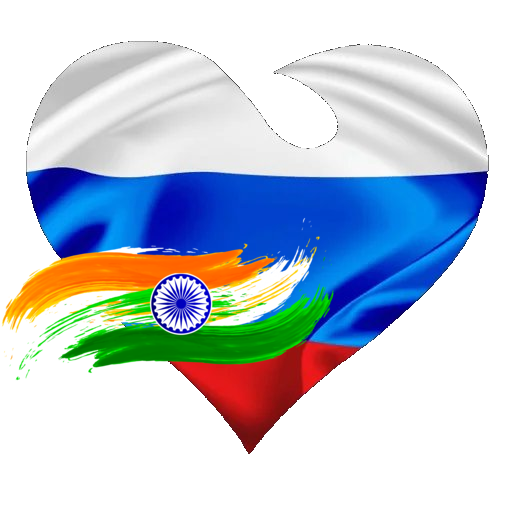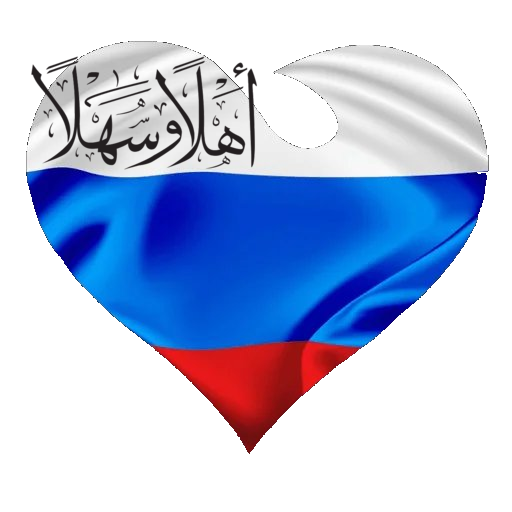The monument to Minin and Pozharsky on Red Square is one of the most famous monuments in Moscow, erected in front of St. Basil’s Cathedral. Inaugurated in 1818, it became the first sculptural monument in the city, and today it has become one of the recognizable symbols of the capital and a must-see attraction for tourists.
The monument is dedicated to Russian national heroes, the leaders of the Second People’s Militia – the head of the Nizhny Novgorod Zemstvo Kuzma Minin and Prince Dmitry Pozharsky, as well as the expulsion of the Polish-Lithuanian invaders from Moscow in 1612 and the end of the time of difficulties.
Author of the monument: the sculptor Iván Martos.
Sculptural composition of the Monument to Minin & Pozharsky
The sculpture artistically depicts the moment of the formation of the militia: Minin (left), urging Pozharsky (right) to lead the volunteers, hands him a sword with his left hand, and points to Moscow captured by enemies with his right.
Pozharsky sits on a rectangular pedestal, leaning on a round shield with the image of the Savior, behind him is a princely helmet.
The prince’s posture is unstable and a bit awkward: getting up, he stretches one leg forward; such a posture is a reminder that at the time of the formation of the militia, he had not yet recovered from past injuries and that he was in Novgorod for treatment.
The men wear tunics with the addition of a Russian pattern, their torsos are powerful, and their faces express confidence.
The central link of the composition is the sword: at first glance it does not attract attention, in fact it is well designed and decorated with floral ornaments, and daisies are depicted on the handle.
The pedestal and details
The huge pedestal of the monument is made of Finnish red granite and decorated with high reliefs.
The high relief on the front of the pedestal represents men and women offering donations to the altar of the Fatherland: the backs of the men bend under the weight of the offerings, and the women, kneeling, donate their jewels.
The people’s clothing resembles ancient chitons, but on the women’s heads there are kokoshniks (traditional Russian headdress worn with the typical sarafan dress between the 16th and 19th centuries); behind the female figures is a father handing over his two sons to the militia.
The high relief on the back of the pedestal depicts a battle scene and is dedicated to the victory of the militia led by Pozharsky: on the left side – Pozharsky fleeing from Moscow, on the right side – Pozharsky on horseback, trampling the enemy and brave Russian soldiers behind him.
On the high relief of the obverse on the pedestal is written in golden letters the dedication:
“Grateful Russia to Citizen Minin and Prince Pozharsky. Summer of 1818.”
The total height of the monument is about 8.6 meters.
Who are Minin and Pozharsky?
Citizen Kuzma Minin (Kosma Minin, Kuzma Sukhoruk) and Prince Dmitry Pozharsky are Russian national heroes who organized the Second People’s Militia, which liberated Moscow from the occupation of Polish-Lithuanian invaders, which lasted from 1610 to 1612.
The initiative to create a militia came from the commercial and artisan population of Nizhny Novgorod, an important economic and administrative center in those years.
The organization of the militia began with the actions of Kuzma Minin, a butcher, since 1611, a head of the Nizhny Novgorod Zemstvo, who began to call the townspeople and city authorities to unite.
At Minin’s suggestion, a fundraiser was started to hire military specialists, so that it would not happen like with the First Militia, which managed to recapture almost all of Moscow, but could not enter the Kremlin and Kitai-Gorod and finally collapsed.
According to Minin, the inhabitants of the city in a general assembly decided that each one should donate part of his property for the needs of the militia, and whoever does not accept, all his property will be confiscated.
Nizhny Novgorod chose Prince Dmitry Pozharsky, whose family estate was located not far from Nizhny Novgorod, for the role of military leader who would lead the militia.
The prince at that time was recovering from injuries received in previous battles.
The Novgorodians admired his firmness, honesty and selflessness and came to him several times with an offer to lead the militia.
In accordance with the customs and etiquette of that time, Pozharsky at first refused the offer of the townspeople, but later accepted it on the condition that Kuzma Minin would take over the financial affairs of the militia.
The victory
The militia consisted of detachments of citizens and peasants from the central and northern regions of Russia. Its formation began in 1611 and continued on the way from Nizhny Novgorod to Moscow, the Yaroslavl population played an important role in this.
The number of the militia did not exceed 7-8 thousand people; on the outskirts of Moscow, was joined by the remnants of the 1st militia, led by Prince Dmitry Trubetskoy.
The campaign against Moscow was successful: on November 1, 1612, the militia occupied Kitay-Gorod, on November 5, the Polish garrisons surrendered and left the Kremlin, and on November 6, the troops of Pozharsky and Trubetskoy solemnly entered in the main fortress of Moscow.
History of the monument to Minin and Pozharsky
For the first time the idea to erect a monument to Minin and Pozharsky arose in 1802, when the Imperial Academy of Arts offered their feat as a subject of work for students.
A year later, the Russian writer and educator Vasily Popugaev expressed the specific idea of installing a monument to the heroes and Patriarch Hermogenes, but it was not supported by Emperor Alexander I, who considered that it would not be possible to raise enough funds for the monument.
However, in 1804, the sculptor Iván Martos, on his own initiative, made a model of the monument, which the public appreciated positively.
After these first steps, the talks stopped until 1808, when the Nizhny Novgorodians again raised the question of building a monument and began to raise funds for it.
This time the emperor supported the idea, giving permission to hold a competition for the best design of the monument. The competition was attended by sculptors Ivan Martos, Theodosius Shchedrin, Stepan Pimenov, Jean-Francois Thomas de Thomon and several others, but Ivan Martos’s project was recognized as the best.
On November 1, 1809, a nationwide subscription to raise funds for the installation of the monument was announced, and in 1811 136,000 rubles were collected. Initially, it was planned to erect the monument to Minin and Pozharsky in Nizhny Novgorod, which was ordered by the emperor, but Martos believed that it should be in Moscow.
Realization
Work on the model of the monument began as early as 1811, even the beginning of the Patriotic War of 1812 did not interfere with the sculptor.
Working on the figures of Minin and Pozharsky, their sons posed for Martos, the project changed several times: for example, in the first draft, Minin was wearing a raincoat and pointed to Moscow with his left hand, and Pozharsky was rushing forward, raising his shield high, both holding the sword with their free hands.
Later, men’s clothing was simplified, and the composition became softer.
For the casting of the monument, an agreement was made with the foundry master of the Academy of Arts Vasily Ekimov, who was one of the first to cast the figures as a whole, and not in parts.
On August 5, 1816, for the first time in Russia, a complex composition that included the figures of two people was cast at once: only the sword, shield and helmet were cast separately.
In 1818 the construction of the monument began. At first they wanted to install it in the Tverskaya Zastava, but Martos wanted to see it on Red Square, and they gave in to the sculptor: the monument was erected between the current GUM and the Kremlin.
Inauguration
The solemn opening ceremony took place on February 20, 1818: Emperor Alexander I and all members of the imperial family, as well as 4 guards regiments who arrived from St. Petersburg and took part in the parade in honor of the opening of the monument they took part in it.
The ceremony was a success and attracted the attention of the townspeople: the roofs of the nearest buildings, as well as the walls and towers of the Kremlin, were filled with people.
Monument to Minin & Pozharsky during Soviet times:
The Soviet years did not pass without a trace for the monument: rivers of criticism fell on it, the publicist Vladimir Blum called it “historical garbage”, and the writer Demyan Bedny in the poem “No Mercy” spoke of the bronze heroes as ” two embezzlers of public funds”.
Fortunately, the monument was not demolished, but in 1931, in connection with the construction of the Lenin Mausoleum and in order to free up the area for parades, it was moved to the walls of the Intercession (St. Basil’s) Cathedral, where it is still is found today. The decision to move the monument was made by Joseph Stalin himself.
On February 20, 2018, the monument celebrated its 200th anniversary.
Interesting data
- When working on the figures of Minin and Pozharsky, the sculptor Ivan Martos was posed by his sons Alexei and Nikita.
- In high relief on the front side of the pedestal in the image of a father giving up his two sons to the militia, the sculptor depicted himself and his sons, one of whom, Alexei, fought in the Kutuzov army, and the second – Nikita: she was arrested and killed by Napoleonic soldiers in France. The profile portrait of Martos with his children was made by his student Samuil Halberg.
- It took 1,100 pounds (~18,000 kilograms) of copper to make the monument, although preparation for the casting took over a month, the casting itself was completed in just 9 minutes.
The famous poet Alexander Pushkin expressed his dissatisfaction with the inscription on the pedestal, making the following comment:
“The inscription to the citizen Minin, of course, is not satisfactory: for us, he is the merchant Kosma Minin, nicknamed Sukhorukoy, or the noble duma Kosma Minich Sukhorukoy, or, finally, Kuzma Minin, a person elected from the entire Moscow state , as he is named in the letter of election of Mikhail Romanov. It would not hurt to know all this, as well as the name and patronymic of Prince Pozharsky.”
- The monument to Minin and Pozharsky became the first sculptural monument in Moscow; before that, triumphal arches and other memorial structures were erected in memory of any events in the city. In addition, this is the first monument in Russia depicting a native of the common people.
- Initially, it was planned to erect the monument in Nizhny Novgorod, but at the behest of the sculptor, it was erected on Red Square in Moscow. In 2005, historical justice was restored to some extent – a reduced copy of the monument appeared in front of the Nizhny Novgorod Kremlin.
Currently:
Today the monument to Minin and Pozharsky has become one of the most popular attractions of the city, a true symbol of Moscow. Installed in the heart of the capital, in Red Square, it has become a must-see point on tourist maps.
You cannot visit Moscow without seeing this special monument and all the charms of the city, but the best way to do it is with our English-speaking guides in Russia.



